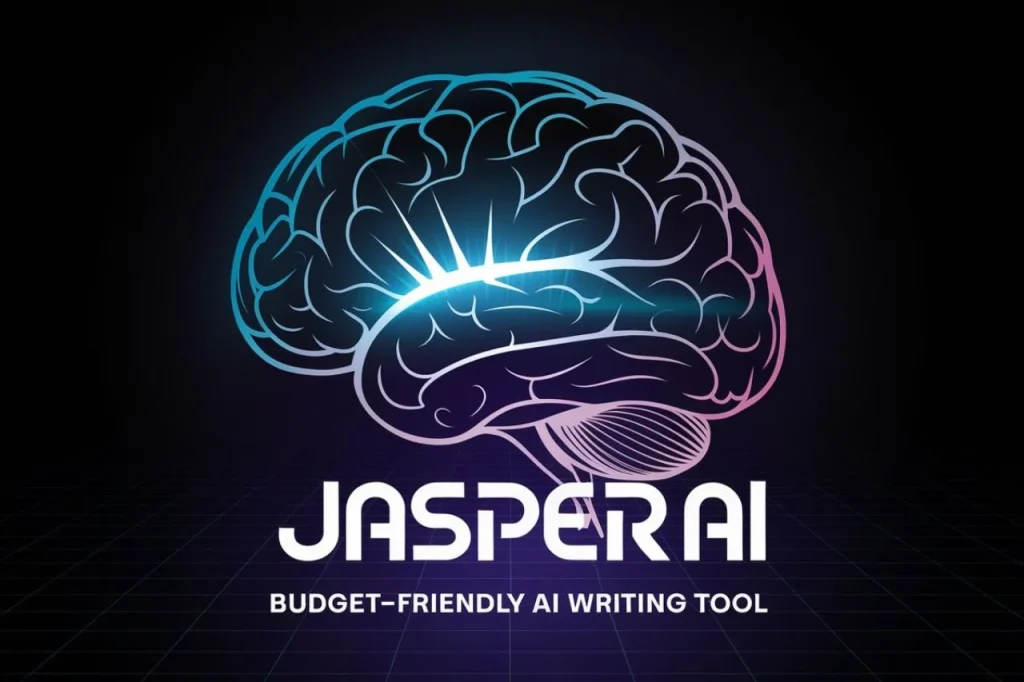
Discover the ultimate guide to the AI Tool for Formal Methods! Explore top tools, their benefits, and real-world applications in critical industries. Learn how these tools transform system verification with step-by-step insights. Ideal for beginners and professionals alike!
Introduction
Ensuring the accuracy and reliability of complex systems is a critical challenge across industries like aerospace, healthcare, and cybersecurity. This is where the AI tool for formal methods becomes indispensable. By combining the mathematical rigor of formal methods with the efficiency of artificial intelligence, these tools revolutionize system design and verification. Traditional approaches often struggle with scalability and precision, but an AI tool for formal methods automates repetitive tasks, enhances accuracy, and simplifies the process for professionals and beginners alike. In this blog, we’ll explore the top AI tools for formal methods, their real-world applications, and how you can leverage them to optimize your workflows.
Table of Contents
1. What Are Formal Methods, and Why Are They Critical for System Validation and Verification?
Formal methods are mathematical techniques used to design, model, and verify systems for accuracy and reliability. They are particularly critical in industries where even minor errors can lead to significant consequences, such as aerospace, healthcare, cybersecurity, and finance.
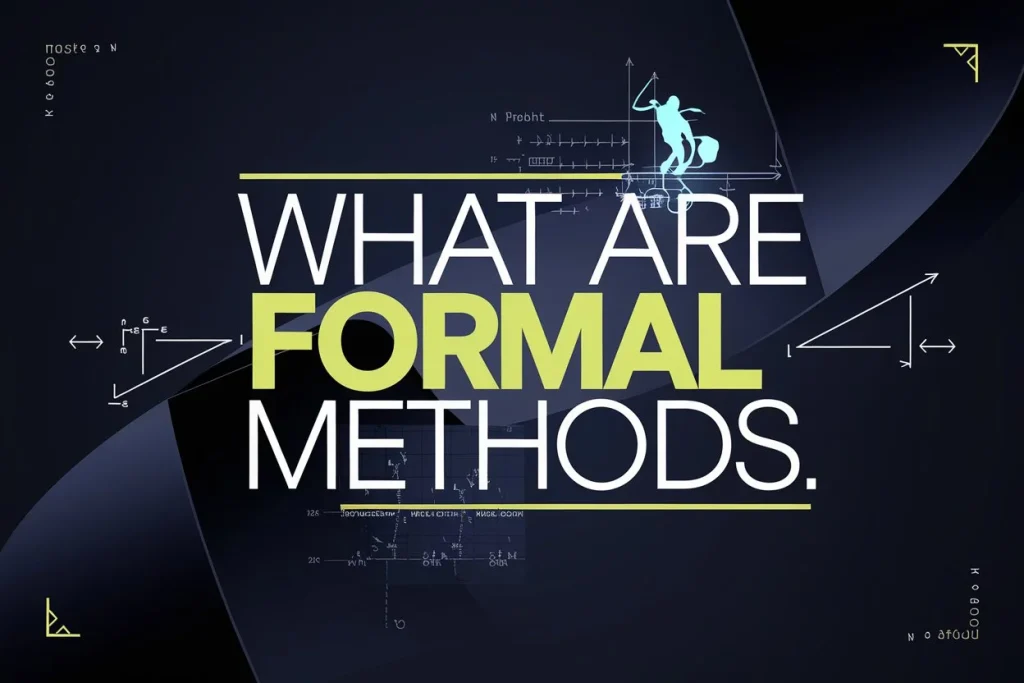
Key Reasons Why Formal Methods Are Crucial:
- Ensure System Correctness:
- Formal methods provide a logical framework to detect errors before they escalate into real-world issues.
- Example: Identifying flaws in an aircraft’s navigation system before deployment.
- Prevent Costly Failures:
- Catching design flaws early reduces expensive redesigns and testing in later stages.
- Ideal for safety-critical systems like medical devices or financial software.
- Enhance Security and Reliability:
- They verify protocols, ensuring secure communication in cybersecurity applications.
- Improve trustworthiness in complex systems.
2. How AI Tools Address Traditional Challenges in Formal Methods
Traditional formal methods often face limitations, such as:
- Complexity: Manual processes are prone to human error, especially for large-scale systems.
- Scalability: Handling highly intricate systems becomes difficult without automation.
- Time-Intensiveness: Manual model checking and theorem proving are time-consuming tasks.
How AI Tools for Formal Methods Solve These Challenges:
- Automation:
- AI tools automate repetitive tasks like model checking and theorem proving, significantly reducing workload.
- Example: Tools like Z3 Solver quickly handle complex logical problems that would take humans hours to solve.
- Scalability:
- AI tools efficiently process large datasets and intricate systems, ensuring they remain manageable.
- Example: Verifying the safety of autonomous vehicle algorithms.
- Enhanced Accuracy:
- By reducing manual intervention, AI tools minimize errors and provide precise results.
- Example: Ensuring that a distributed system operates seamlessly without conflicts.
- Faster Results:
- AI-powered solutions cut down analysis time from days to hours.
- Perfect for time-sensitive industries like cybersecurity.
3. Blog Overview: Tools, Applications, Benefits, and Insights
This blog will guide you through everything you need to know about AI tools for formal methods.
Here’s What You’ll Learn:
- Top Tools:
- A curated list of the best AI tools, such as Alloy Analyzer, TLA+, and Z3 Solver.
- Features, use cases, and tips to choose the right one for your needs.
- Real-World Applications:
- Insights into how industries like aerospace and healthcare use AI tools for system validation and verification.
- Case studies and success stories to illustrate their impact.
- Step-by-Step Guide:
- A detailed walkthrough of how to use an AI tool for formal methods effectively, from setting up to analyzing results.
- FAQs and Expert Tips:
- Common questions answered to help beginners and professionals get started.
- Pro tips for selecting, using, and mastering these tools.
By the end of this guide, you’ll have a clear understanding of how an AI tool for formal methods can revolutionize your workflow and boost system reliability. Let’s dive in!
Understanding Formal Methods: A Comprehensive Overview
1. What Are Formal Methods?
Formal methods are mathematical techniques used to specify, design, and verify systems to ensure they are correct, reliable, and secure. They help in building a formal model of a system and applying logical reasoning to validate its behavior. These methods are essential in ensuring that complex systems operate without failure.
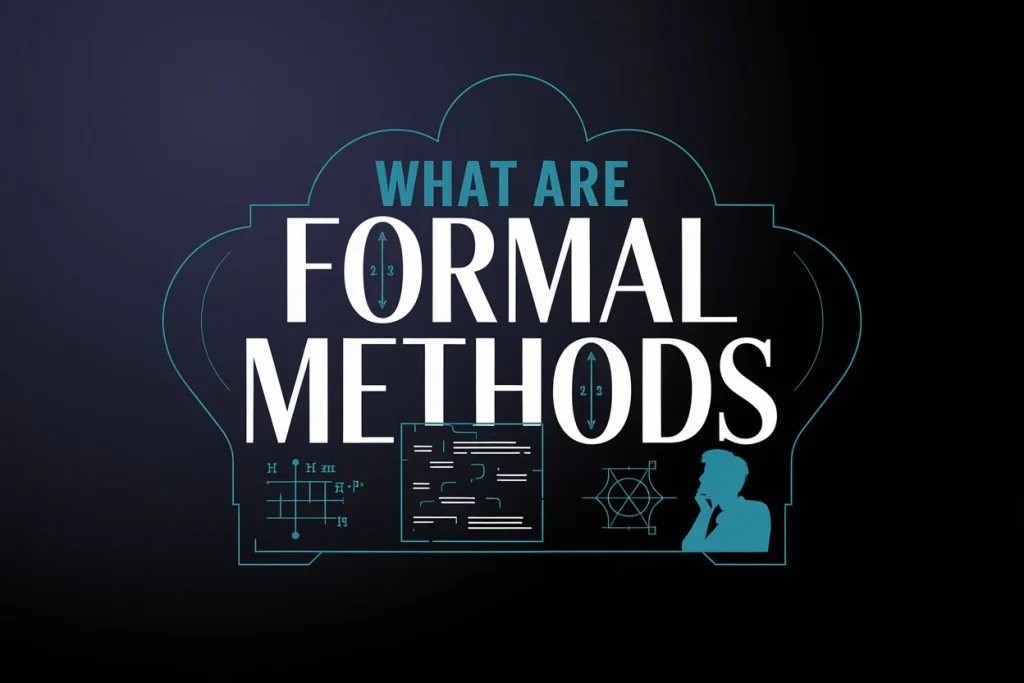
Key Aspects of Formal Methods:
- Mathematical Foundations: Formal methods rely on mathematical logic to rigorously define system behavior, ensuring precision and accuracy.
- System Design & Verification: They help in checking that systems, whether software or hardware, meet the intended requirements and work as expected.
- Automation of Analysis: Formal methods can be automated, providing a faster and more reliable way of verifying systems compared to manual testing.
2. Importance of Formal Methods in Critical Industries
Formal methods are crucial for industries where safety, security, and reliability are paramount. Their ability to provide error-free verification makes them indispensable in many high-stakes applications.
Why Formal Methods Matter:
- Aerospace:
- In aerospace, formal methods are used to verify the reliability of flight control systems. Even minor errors could have catastrophic consequences.
- Healthcare:
- Medical device software, such as pacemakers or insulin pumps, must undergo rigorous verification to ensure they function correctly without failures.
- Cybersecurity:
- Formal methods help validate encryption protocols and security algorithms, preventing vulnerabilities that could compromise sensitive data.
3. Traditional Challenges in Formal Methods
While formal methods provide great benefits, they also come with their own set of challenges. These traditional hurdles can make them difficult to apply in large-scale systems or under time constraints.
Challenges with Traditional Formal Methods:
- Time Consumption:
- Verifying large, complex systems manually using formal methods can take an extensive amount of time, often stretching to weeks or months.
- Manual Errors:
- Because formal methods often require manual intervention, there is room for human error, which can lead to incorrect verification results or missed issues.
- Scalability Issues:
- As systems grow in complexity, applying formal methods manually becomes increasingly difficult. Handling large datasets and intricate system designs can overwhelm traditional methods.
Formal methods are vital for ensuring the correctness of complex systems, especially in high-risk industries. However, the traditional approach to these methods comes with challenges, such as time consumption, errors, and scalability issues. This is where AI tools for formal methods can make a real difference by automating many of these tasks and providing faster, more accurate verification.
The Role of AI in Formal Methods: Revolutionizing System Verification
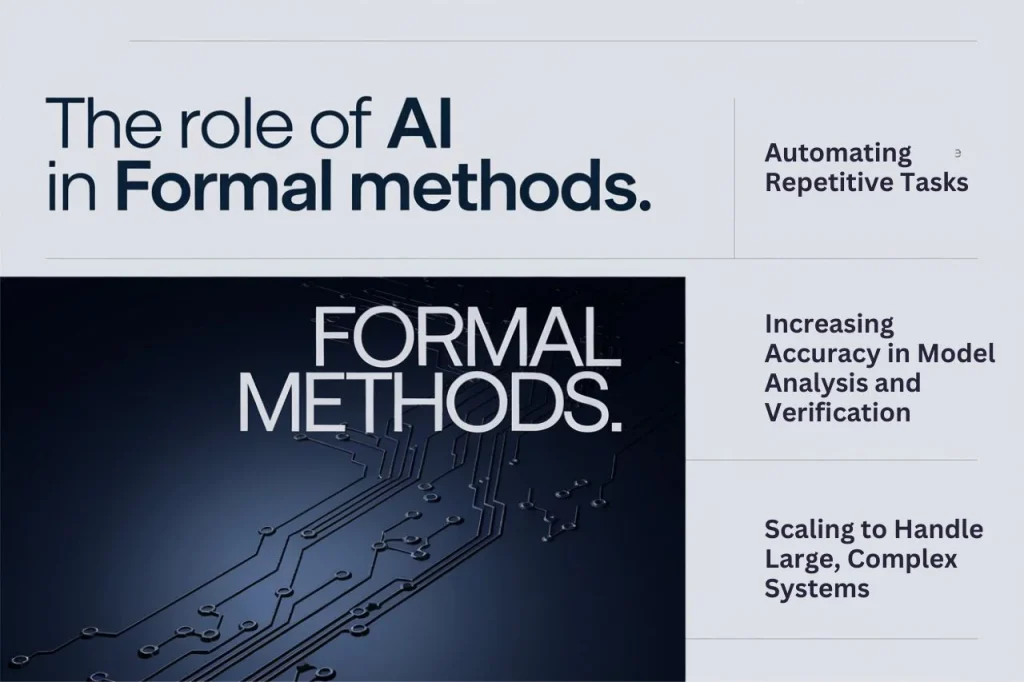
1. How AI is Transforming the Landscape of Formal Methods
AI is bringing significant improvements to the world of formal methods, making them faster, more accurate, and scalable. By incorporating AI, these traditionally complex techniques are becoming more efficient and accessible.
How AI Improves Formal Methods:
- Automating Repetitive Tasks
- AI tools can automate tedious tasks like model checking, theorem proving, and error detection, which traditionally required manual effort.
- This automation speeds up the verification process and reduces human error, allowing experts to focus on more complex analysis.
- Example: AI tools like Z3 Solver can quickly check a vast number of possible states in a system, a task that would take humans much longer.
- Increasing Accuracy in Model Analysis and Verification
- AI algorithms enhance the accuracy of verifying system models, ensuring that the final design is free of errors or flaws.
- AI’s ability to process large datasets helps identify potential issues that might be missed through manual checks, improving the overall reliability of systems.
- Example: Machine learning can identify patterns in system behavior, predicting flaws in designs before they occur.
- Scaling to Handle Large, Complex Systems
- AI tools are capable of handling large, intricate systems, a major challenge with traditional formal methods.
- They can analyze systems with numerous variables, conditions, and components, making them ideal for modern software applications and hardware designs.
- Example: Tools like TLA+ can analyze and verify the correctness of large-scale distributed systems that traditional methods might struggle to manage.
2. Why Use an AI Tool for Formal Methods?
Adopting AI tools for formal methods offers numerous advantages that significantly enhance system design and verification.
Key Benefits of Using an AI Tool for Formal Methods:
- Speed:
- AI-powered tools dramatically reduce the time required to verify complex systems. Tasks that would normally take weeks or months can now be completed in a fraction of the time.
- Example: AI tools can perform thousands of checks simultaneously, ensuring quicker results.
- Precision:
- AI tools provide highly accurate verification, reducing the risk of human errors that might occur during manual processes. This leads to better system reliability and fewer failures.
- Example: AI can analyze every possible scenario in a system’s design, ensuring nothing is overlooked.
- Reduced Cost:
- By automating repetitive tasks and improving the speed and accuracy of verification, AI tools lower the overall cost of system development.
- The ability to catch errors early in the design phase prevents costly fixes later on in the development cycle.
- Example: Automating system verification reduces the need for extensive testing and redesigns, saving both time and money.
AI is revolutionizing the world of formal methods by automating tasks, improving accuracy, and scaling to handle complex systems. Using an AI tool for formal methods provides key benefits like speed, precision, and reduced costs, making the verification process more efficient and reliable. This is why incorporating AI into formal methods is becoming a game-changer for industries that rely on complex, error-free systems.
Top 10 AI Tools for Formal Methods: A Comprehensive Guide
When it comes to AI tools for formal methods, the right tool can make a significant difference in the efficiency, accuracy, and scalability of system verification. Below is a detailed list of the top 10 AI tools, their key features, use cases, and a comparison table to help you choose the best tool for your needs.
1. Alloy Analyzer
Features:
- Lightweight and easy-to-use modeling tool designed for relational systems.
- Provides an intuitive interface for creating and analyzing system models.

Use Cases:
- Primarily used in software engineering for debugging and refining design models.
- Ideal for modeling systems where relational properties are key.
Website: Alloy Analyzer
2. TLA+ with TLC
Features:
- Combines temporal logic and AI to verify the correctness of distributed systems.
- Includes the TLC model checker, a tool for automatic verification of TLA+ specifications.

Use Cases:
- Used for modeling and verifying concurrent systems, especially in distributed environments.
- Great for verifying multi-threaded software and hardware systems.
Website: TLA+
3. Z3 Solver (Microsoft)
Features:
- A high-performance automated theorem proving tool that supports logical reasoning.
- Efficient at checking complex constraints and finding solutions.

Use Cases:
- Ideal for software verification tasks, where checking the validity of logical expressions is required.
- Can be used for analyzing system requirements and model checking.
Website: Z3 Solver
4. SPIN Model Checker
Features:
- Specialized in the analysis of concurrent systems through model checking.
- Supports automated state space exploration to find errors in systems.

Use Cases:
- Widely used in protocol verification, where system properties such as safety and liveness need to be validated.
- Ideal for communication protocol design and verification in multi-agent systems.
Website: SPIN Model Checker
5. Coq
Features:
- An interactive proof assistant that allows users to create formal models for verification.
- Supports a rich set of logical foundations for rigorous proof construction.

Use Cases:
- Best used for formalizing algorithms and mathematical proofs in software development and research.
- Used extensively in academic and research settings for verifying theoretical concepts.
Website: Coq
6. Isabelle
Features:
- A powerful theorem proving environment that supports interactive proof development.
- Extensively used for verifying critical systems with high reliability requirements.

Use Cases:
- Ideal for verifying critical software systems, where correctness and security are paramount.
- Used in aerospace, automotive, and other high-risk industries.
Website: Isabelle
7. UPPAAL
Features:
- A tool for verification of real-time and embedded systems, focusing on timed automata.
- Supports automated model checking of time-sensitive systems.

Use Cases:
- Time-critical applications in fields like automotive systems, robotics, and embedded systems.
- Used for verifying systems where timing and concurrency are crucial.
Website: UPPAAL
8. NuSMV
Features:
- A symbolic model checker designed for finite-state systems, which are common in digital circuits and protocols.
- Provides both BDD-based and SAT-based verification techniques.

Use Cases:
- Industrial-level system verification, particularly in the design of hardware systems and large-scale software.
- Used in applications where checking complex state transitions is essential.
Website: NuSMV
9. ProB Tool
Features:
- Supports B and Event-B models and offers constraint-solving capabilities for formal specifications.
- Allows for dynamic analysis and verification of system models.

Use Cases:
- Validating formal specifications in systems such as railway signaling, banking systems, and avionics.
- Used in industries that require highly dependable systems and safety-critical designs.
Website: ProB Tool
10. ACL2
Features:
- A logical reasoning tool for creating formal models and verifying software and hardware.
- Provides a set of powerful tools for proving properties of software and hardware systems.
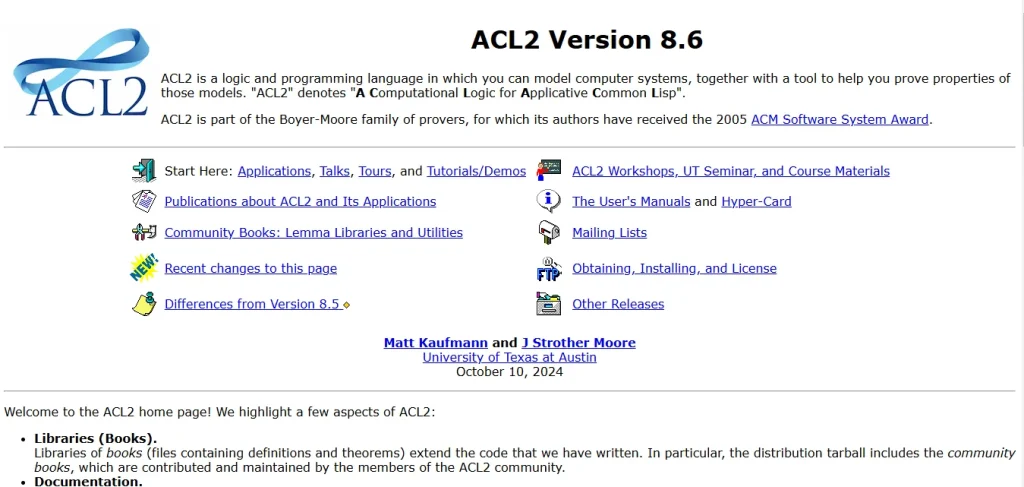
Use Cases:
- Hardware and software verification, ensuring that components work as expected.
- Used for verifying properties in large, complex systems, often in the semiconductor and aerospace industries.
Website: ACL2
Comparison Table: Features, Strengths, and Industry Relevance
| Tool | Key Features | Strengths | Industry Use | Website |
|---|---|---|---|---|
| Alloy Analyzer | Lightweight, relational modeling | Easy-to-use, intuitive UI | Software engineering | Alloy |
| TLA+ with TLC | Temporal logic, distributed systems verification | Ideal for concurrent systems | Distributed systems | TLA+ |
| Z3 Solver | Automated theorem proving, logical reasoning | High-performance solver, accurate | Software verification | Z3 Solver |
| SPIN Model Checker | Concurrent systems analysis | Automated state space exploration | Protocol verification | SPIN |
| Coq | Interactive proof assistant, formal models | Rigorous mathematical foundation | Algorithm and proof formalization | Coq |
| Isabelle | Theorem proving, interactive proof development | Ideal for critical systems | Aerospace, automotive | Isabelle |
| UPPAAL | Real-time and embedded system verification | Specialized in timed automata | Automotive, robotics, embedded | UPPAAL |
| NuSMV | Symbolic model checking, BDD-based verification | Effective for large-scale systems | Hardware and large software systems | NuSMV |
| ProB Tool | B and Event-B models, constraint-solving | Dynamic analysis, strong support for formal specifications | Safety-critical systems | ProB |
| ACL2 | Logical reasoning, software and hardware verification | Powerful proof tools | Hardware, software verification | ACL2 |
These tools, with their specific strengths and industry relevance, make AI tools for formal methods more accessible, accurate, and scalable, transforming how systems are verified and validated in critical industries.
Real-World Applications of AI Tools for Formal Methods: Improving System Reliability and Efficiency
Key Industries Using Formal Methods
AI tools for formal methods are revolutionizing various industries by ensuring system reliability, validating complex algorithms, and enhancing security. Below are the key industries where these tools are playing a crucial role.
1. Aerospace: Ensuring the Reliability of Flight Systems
In the aerospace industry, safety is paramount. AI tools help validate the design and functionality of flight control systems, autopilots, and navigation software. By automating verification processes, these tools reduce human errors and ensure that critical systems are reliable and safe under all conditions.
- AI Tools Used: Tools like UPPAAL and Isabelle are used to verify the timing and correctness of control systems in real-time flight operations.
- Impact: Ensures that flight systems operate without fail, even in the most demanding environments, minimizing the risk of catastrophic failures.
2. Healthcare: Validating Software for Life-Critical Devices
In the healthcare industry, AI tools are crucial for verifying the software that powers life-critical devices, such as pacemakers, insulin pumps, and diagnostic equipment. Formal methods help guarantee that these devices function accurately, without glitches, and meet stringent safety standards.
- AI Tools Used: Coq and Z3 Solver are commonly employed for verifying the mathematical models and correctness of medical device software.
- Impact: Ensures the safety and reliability of life-saving devices, preventing potentially dangerous malfunctions.
3. Finance: Risk Assessment in Algorithms for Trading Systems
In finance, formal methods and AI are used to ensure the reliability of algorithms that power trading systems, investment strategies, and risk management tools. By rigorously analyzing these algorithms, AI tools help assess risks and minimize errors that could lead to financial losses.
- AI Tools Used: Tools like SPIN Model Checker and Z3 Solver are utilized to verify trading algorithms and risk models.
- Impact: Reduces the chances of unexpected financial losses caused by algorithmic errors and market volatility.
4. Cybersecurity: Verifying Cryptographic Protocols
Cybersecurity is another field where AI tools are essential. Verifying the strength and correctness of cryptographic protocols ensures that sensitive data, such as financial transactions and personal information, remain secure from hackers.
- AI Tools Used: ACL2 and TLA+ with TLC are frequently used to check the correctness of encryption methods and verify secure communications.
- Impact: Enhances data protection and strengthens the integrity of systems against cyberattacks.
Case Studies or Examples: How AI Tools Improved System Reliability and Efficiency
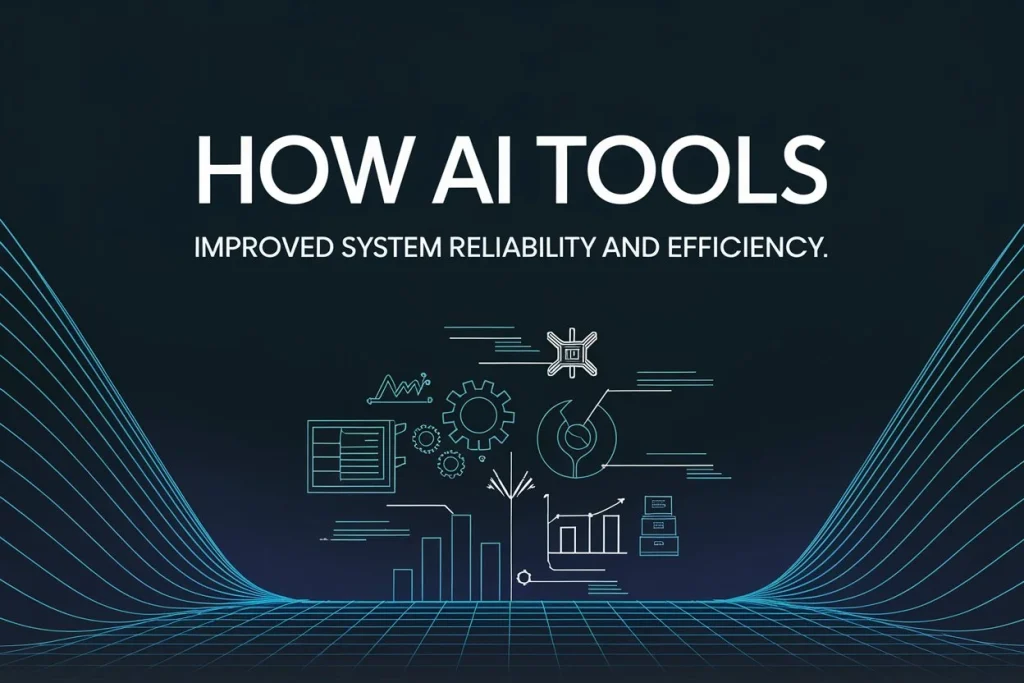
1. NASA’s Mars Rover: Ensuring Fault-Free Operation
NASA used formal methods, combined with AI tools, to ensure the reliability of the Mars Rover‘s onboard systems. By using formal verification techniques, they ensured that the rover’s systems could function without errors in the harsh Martian environment, where failure was not an option.
- Tools Used: SPIN Model Checker and Z3 Solver for verifying the rover’s control software.
- Result: The Mars Rover successfully operated for extended periods, with minimal technical issues, contributing to key discoveries on Mars.
2. Boeing’s Airplane Systems: Reducing System Failures
Boeing used AI tools to verify the complex flight control systems of its airplanes. Formal methods helped identify potential flaws in software systems that could have led to flight safety issues.
- Tools Used: UPPAAL and Isabelle for real-time verification of control systems.
- Result: Enhanced safety and reliability of aircraft, reducing the risk of flight system failures.
3. Healthcare Software for Medical Devices: Preventing Malfunctions
A leading medical technology company used AI-based formal methods to validate the software running on pacemakers and other life-critical medical devices. The tools helped identify software vulnerabilities that could have affected device performance.
- Tools Used: Coq for verifying software algorithms in life-critical systems.
- Result: The software is now verified to be free from errors, ensuring the safety and proper function of the devices.
4. High-Frequency Trading: Minimizing Algorithmic Risk
A financial institution adopted AI tools for verifying the algorithms used in their high-frequency trading systems. By using formal methods to validate the trading strategies, the company reduced the risk of algorithmic failures, which could lead to significant financial losses.
- Tools Used: Z3 Solver and SPIN Model Checker for verifying trading algorithms.
- Result: A more reliable and efficient trading platform, minimizing risk and ensuring more consistent profits.
AI tools for formal methods are not just theoretical; they are making real-world impact across critical industries such as aerospace, healthcare, finance, and cybersecurity. By automating complex verification tasks, these tools improve system reliability, reduce risks, and enhance the overall performance of essential systems. As these tools continue to evolve, they will play an even greater role in shaping the future of technology.
How to Use AI Tool for Formal Methods Effectively: A Step-by-Step Guide
Using an AI tool for formal methods can greatly enhance the reliability and accuracy of system verification. By following a structured approach, you can ensure that the tool is used to its full potential, leading to better results in system validation and verification. Here’s a step-by-step guide to help you use AI tools effectively.
Step 1: Define System Requirements or Problems
The first and most crucial step in using an AI tool for formal methods is to clearly define the system’s requirements or the problems you aim to solve. This will guide the selection of the right tool and the development of formal models.
- Key Actions:
- Identify the system’s purpose, components, and critical requirements.
- Define any potential issues, such as performance bottlenecks, security vulnerabilities, or concurrency problems.
- Determine the scope of verification—whether you’re verifying software, hardware, or a combination of both.
- Why It Matters:
A well-defined problem or requirement ensures that you choose the right AI tool for formal methods and avoid wasting resources on unnecessary verification.
Step 2: Select the Appropriate Tool from the Top 10 List
Choosing the correct AI tool for formal methods is essential for achieving accurate and effective results. Refer to the list of top AI tools for formal methods mentioned earlier and select the one best suited to your system’s needs.
- Key Actions:
- Evaluate the features, strengths, and use cases of each tool.
- Consider factors like the complexity of your system, required verification depth, and the type of formal method (e.g., model checking, theorem proving).
- Make sure the tool is compatible with your system’s requirements and programming languages.
- Why It Matters:
Selecting the right tool minimizes errors, enhances the verification process, and ensures that your formal methods work as intended.
Step 3: Create Formal Models or Specifications
Once the tool is selected, the next step is to create formal models or specifications. This involves translating your system requirements into formal representations that the AI tool for formal methods can process.
- Key Actions:
- Use the selected tool’s modeling language (such as TLA+ for distributed systems or Alloy for relational systems) to create your model.
- Define the system’s variables, constraints, and behavior in formal terms.
- Specify the properties that need to be verified, such as safety, liveness, or correctness.
- Why It Matters:
Formal models are the foundation of the verification process. They ensure that the tool correctly analyzes the system’s behavior and identifies potential issues.
Step 4: Run Verification Processes and Interpret Results
With the formal model in place, it’s time to run the verification process. This step involves using the AI tool for formal methods to check the model against the defined specifications.
- Key Actions:
- Run the verification process using the tool’s built-in algorithms and check for errors, inconsistencies, or violations of the specified properties.
- Interpret the tool’s results, which may include counterexamples (indicating where the system fails) or confirmation that the model is correct.
- Analyze the outcomes to identify any potential weaknesses or areas needing improvement.
- Why It Matters:
Running the verification process helps uncover system flaws that might not be immediately obvious, ensuring that the system behaves as expected in all scenarios.
Step 5: Iterate Based on Feedback and Refine the System
Verification is an iterative process. Based on the feedback from the tool, refine the system by making adjustments to the model or specifications. This step may involve revising parts of the system or the model itself to resolve issues uncovered during verification.
- Key Actions:
- Review the tool’s feedback and pinpoint specific problem areas.
- Make adjustments to the model or system design based on identified errors or inefficiencies.
- Re-run the verification process after making changes and ensure that the system now meets the required specifications.
- Why It Matters:
Iterating based on feedback helps to continuously improve the system’s design and ensures that it meets all verification criteria, leading to a more reliable and efficient system.
By following these five steps, you can effectively use an AI tool for formal methods to enhance the reliability, scalability, and security of your systems. Whether you’re working in aerospace, healthcare, finance, or cybersecurity, these tools can help you tackle complex verification tasks, minimize errors, and build more robust systems.
This methodical approach will allow you to fully leverage the capabilities of AI in formal methods, ensuring that your system design meets the highest standards of accuracy and performance.
Choosing the Right AI Tool for Formal Methods: A Comprehensive Guide
Selecting the right AI tool for formal methods is crucial to ensuring effective system verification and validation. With numerous tools available, it’s important to choose one that fits your needs and expertise. Here’s a step-by-step guide on how to make the best choice.
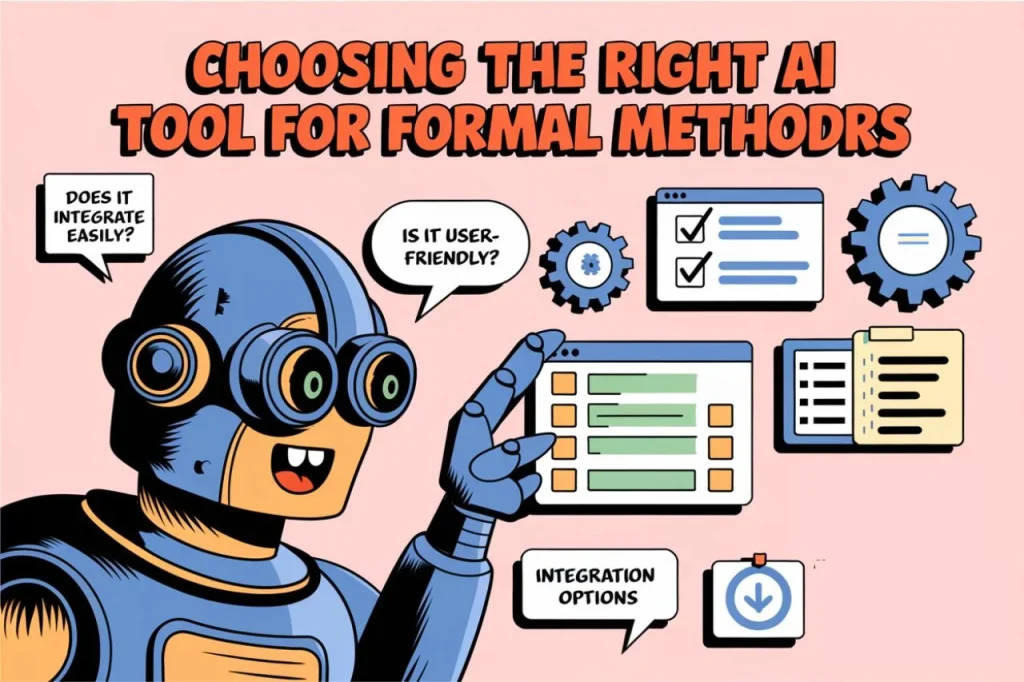
Factors to Consider When Choosing an AI Tool for Formal Methods
When selecting an AI tool for formal methods, several factors must be considered to ensure that the tool aligns with your project’s requirements and capabilities. Let’s break them down:
1. Complexity of the System
The complexity of the system you’re working with plays a major role in choosing the right AI tool for formal methods. More complex systems may require advanced tools with sophisticated algorithms and capabilities.
- For Simple Systems:
- Consider lightweight tools like Alloy Analyzer for relational systems.
- For Complex Systems:
- Use tools like TLA+ with TLC or Isabelle, which can handle large-scale, concurrent, and distributed systems.
- Why It Matters:
Choosing a tool suited to your system’s complexity helps avoid unnecessary challenges and ensures that the tool’s features align with the system’s needs.
2. Features and Compatibility of the Tool
Ensure that the AI tool for formal methods you choose has the features necessary for your specific use case. It’s also important to check whether the tool is compatible with your system’s programming languages and environment.
- Key Features to Look For:
- Modeling Languages: Does the tool support the type of modeling language you require (e.g., TLA+, Alloy)?
- Verification Capabilities: Ensure it offers the types of verification you need, such as model checking, theorem proving, or symbolic verification.
- Why It Matters:
The right tool should be able to handle the specific verification tasks your system demands. Compatibility with your existing tech stack ensures smoother integration.
3. Availability of Support and Documentation
A well-documented tool with a strong support community is invaluable, especially for beginners. The availability of resources like tutorials, guides, forums, and customer support can make a huge difference in how quickly you can get up to speed with the tool.
- Things to Check:
- Documentation: Look for clear, comprehensive manuals and examples.
- Community Support: A large community can provide insights and troubleshooting advice.
- Why It Matters:
If you encounter challenges, having access to tutorials and support can save time and reduce frustration, especially when using an AI tool for formal methods for the first time.
4. Cost and Licensing Options
Cost is an important factor when choosing an AI tool for formal methods, as it can vary significantly between tools. Some tools are open-source and free, while others come with licensing fees.
- Consider the Following:
- Open-Source Tools: Many tools like SPIN Model Checker and TLA+ are free and open-source.
- Paid Tools: Tools like UPPAAL or Isabelle may offer advanced features at a cost, but they may also come with premium support.
- Why It Matters:
You should choose a tool that fits your budget while meeting your needs. For large-scale or critical projects, investing in a paid tool might be worthwhile for additional support and features.
Tips for Selecting Tools Based on User Expertise
The level of expertise you or your team has with formal methods should guide your choice of AI tool for formal methods. Tools vary in complexity and are often tailored to different user experience levels.
1. For Beginners:
- Start Simple: If you’re new to formal methods, consider tools that are easy to learn and use.
- Recommended Tools: Alloy Analyzer (simple modeling) or ProB Tool (intuitive interface).
- Why It Matters:
These tools typically have user-friendly interfaces and are easier to understand, helping you build confidence with formal methods.
2. For Intermediate Users:
- Move to Advanced Tools: Once you’re comfortable, explore tools with more features and complexity.
- Recommended Tools: Z3 Solver, SPIN Model Checker, or TLA+ with TLC.
- Why It Matters:
These tools offer more advanced capabilities, such as support for complex models and detailed verification, which intermediate users can take full advantage of.
3. For Advanced Users:
- Explore Highly Customizable Tools: If you have extensive experience with formal methods, choose tools that offer deep customization and fine-grained control over verification processes.
- Recommended Tools: Isabelle, Coq, or UPPAAL.
- Why It Matters:
These tools offer powerful features that allow advanced users to define detailed models and verification strategies.
Choosing the right AI tool for formal methods requires careful consideration of your system’s complexity, the tool’s features, support availability, cost, and your level of expertise. By evaluating these factors, you can select the tool that best suits your project’s needs and expertise level, ensuring effective verification and validation of your systems.
Whether you are a beginner or an advanced user, there is a perfect AI tool for formal methods out there to help you achieve accurate, reliable results.
The Future of AI Tools in Formal Methods: Trends, Challenges, and Predictions
The future of AI tools for formal methods is both exciting and transformative. As AI continues to evolve, it is reshaping the way we approach formal verification and validation. Let’s explore the emerging trends, challenges, and predictions for AI-driven formal methods in the coming decade.
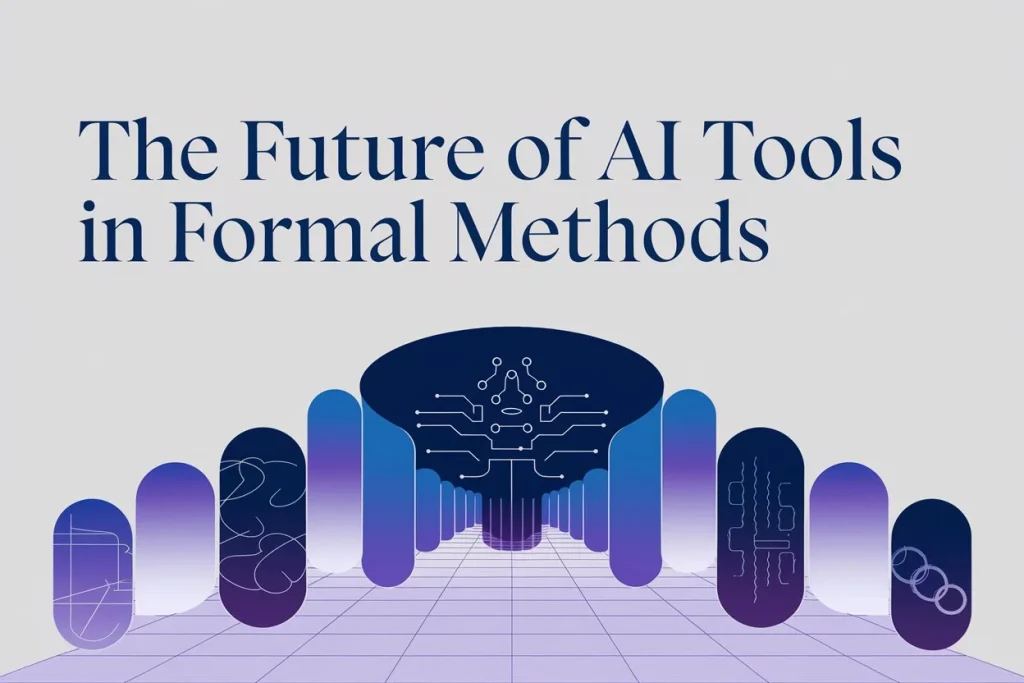
Emerging Trends: How AI is Pushing the Boundaries of Formal Verification
AI is revolutionizing the field of formal methods, introducing cutting-edge techniques that make verification more efficient, accurate, and scalable. Here are some key trends to watch for:
1. Enhanced Automation with Machine Learning
- AI-powered tools are increasingly using machine learning to automate complex verification tasks, such as model checking and theorem proving. This automation not only speeds up the process but also improves the precision of results.
- Why It Matters:
Automation reduces human error and increases the capacity to handle large, complex systems that were previously difficult to verify manually.
2. Integration with Quantum Computing
- Quantum AI tools are expected to play a significant role in formal methods, particularly in solving problems related to large-scale system verification. Quantum computing’s ability to process vast amounts of data will enhance the performance of AI-based formal verification tools.
- Why It Matters:
Quantum computing can solve computationally intense problems much faster than classical systems, making it ideal for verifying large-scale and complex systems.
3. AI-Driven Real-Time Verification
- Real-time systems, especially in areas like aerospace and healthcare, demand immediate verification. AI tools are increasingly being integrated with real-time systems to provide instant feedback on design flaws or security vulnerabilities.
- Why It Matters:
Real-time verification ensures the reliability and safety of critical systems, providing immediate insights and improving decision-making during development.
Challenges and Opportunities: Computational Limits, Ethical Considerations, and Industry Adoption
Despite the advancements, there are still significant challenges that need to be addressed for AI tools to fully realize their potential in formal methods.
1. Computational Limits
- The complexity of modern systems and algorithms often exceeds the computational power available for verification, especially when dealing with large-scale, distributed systems.
- Opportunity:
As computational power increases, AI tools will become more capable of handling even larger systems and more intricate verification tasks, opening up new possibilities in system design and testing.
2. Ethical Considerations
- With the growing reliance on AI tools in formal methods, ethical concerns such as data privacy, decision transparency, and accountability arise. The use of AI for system verification may influence critical decisions that impact human lives (e.g., in healthcare or aerospace).
- Opportunity:
Ensuring ethical AI practices in formal methods is crucial. Developers and policymakers must work together to establish frameworks that promote transparency, fairness, and responsibility in AI-driven formal verification processes.
3. Industry Adoption and Trust
- The widespread adoption of AI tools for formal methods across industries is still in progress. Some industries may hesitate to fully trust AI-driven verification due to concerns over reliability, accuracy, and understanding of AI models.
- Opportunity:
As AI tools continue to demonstrate their capabilities and reliability, industries will begin to adopt them more widely. Greater education, transparency, and success stories will drive adoption and build trust in AI-based formal verification.
Predictions for the Evolution of AI-Driven Formal Methods in the Next Decade
Looking ahead, the next decade holds tremendous potential for the evolution of AI tools for formal methods. Here are some predictions for the future:
1. Widespread Industry Adoption
- In the coming years, industries such as aerospace, healthcare, cybersecurity, and finance will increasingly rely on AI tools for formal methods to ensure system reliability, safety, and security.
- Why It Matters:
The more industries adopt AI-based formal methods, the more refined and accessible these tools will become, leading to broader acceptance and innovation.
2. AI-Enhanced Verification for Complex Systems
- The AI tools of the future will be able to handle the verification of highly complex systems, including those with millions of components and real-time demands. These tools will be able to verify not only individual components but entire systems in an integrated manner.
- Why It Matters:
This evolution will enable more accurate predictions, better system designs, and faster time-to-market for products in critical industries.
3. Collaboration Between AI and Human Experts
- While AI tools for formal methods will continue to advance, human expertise will remain essential. AI will assist experts by handling the heavy lifting of verification, but humans will still play a key role in interpreting results, refining models, and making critical decisions.
- Why It Matters:
The combination of AI’s power and human insight will lead to more reliable, robust systems and effective formal verification processes.
The future of AI tools for formal methods is bright, with numerous emerging trends pushing the boundaries of what’s possible in formal verification and validation. While challenges like computational limits and ethical concerns remain, the opportunities are vast, with AI playing a central role in the future of system verification across industries. As AI tools continue to evolve, their impact on formal methods will only grow, offering new levels of efficiency, accuracy, and scalability for system design and validation.
By staying informed about these trends and preparing for the challenges ahead, industries can make the most of AI-driven formal methods in the years to come.
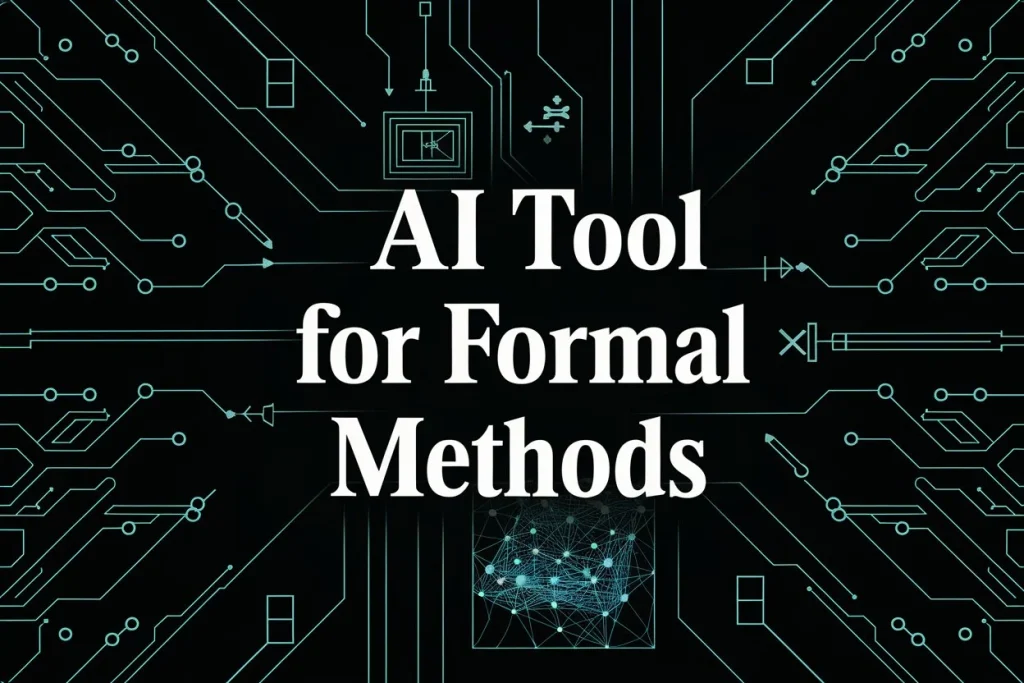
FAQs
What is an AI Tool for Formal Methods?
An AI tool for formal methods is a software solution that uses artificial intelligence to assist in the verification and validation of complex systems. These tools apply mathematical techniques to model, analyze, and verify the behavior of systems, ensuring they meet specific requirements.
Why It Matters:
AI tools help streamline the verification process, making it more accurate and efficient, especially for large, complex systems.
What is an AI Tool for Formal Methods and How Does It Work?
The key benefits of using an AI tool in formal methods include:
Speed: Automates processes, reducing verification time.
Accuracy: Minimizes human error, ensuring a more reliable verification process.
Scalability: Can verify larger and more complex systems efficiently.
Cost-Efficiency: Reduces the need for extensive manual testing and minimizes errors that could lead to costly failures.
Why It Matters:
With these benefits, using an AI tool significantly enhances system reliability while also reducing time and costs.
How Does an AI Tool for Formal Methods Improve System Verification?
An AI tool for formal methods enhances system verification by automating the analysis of system models. It reduces human error and ensures a more scalable approach, especially for large and complex systems.
Why It Matters:
By using an AI tool for formal methods, organizations can achieve faster, more reliable verification, even for intricate systems.
What Are the Key Benefits of Using an AI Tool for Formal Methods?
The key benefits of an AI tool for formal methods include:
Speed: It accelerates the verification process.
Accuracy: Minimizes errors during validation.
Scalability: Handles complex and large-scale systems.
Cost-Effectiveness: Reduces the need for extensive manual checks.
Why It Matters:
With an AI tool for formal methods, companies can improve both efficiency and cost savings in their verification processes.
Which Industries Benefit from an AI Tool for Formal Methods?
Industries that benefit from an AI tool for formal methods include:
Aerospace: Ensuring the safety of flight systems.
Healthcare: Verifying software used in life-critical devices.
Cybersecurity: Validating cryptographic systems.
Finance: Ensuring the reliability of trading algorithms.
Why It Matters:
An AI tool for formal methods helps industries that require high levels of system reliability and accuracy.
Are AI Tools for Formal Methods Suitable for Beginners?
Yes, an AI tool for formal methods can be suitable for beginners. Many tools offer clear documentation and intuitive user interfaces, making it easier for newcomers to get started.
Why It Matters:
A user-friendly AI tool for formal methods helps beginners understand and apply formal verification techniques efficiently.
How Does an AI Tool for Formal Methods Handle Complex Systems?
An AI tool for formal methods tackles complexity by automating tasks like model checking and theorem proving. It allows the verification of large and intricate systems, ensuring they adhere to their specifications.
Why It Matters:
With an AI tool for formal methods, even the most complex systems can be verified effectively, saving time and effort in the process.
How Can an AI Tool for Formal Methods Benefit Software Developers?
An AI tool for formal methods helps software developers detect errors early in the development cycle. By automating verification, it ensures that software designs are correct and meet specifications.
Why It Matters:
Using an AI tool for formal methods can save developers time, reduce errors, and improve the overall quality of the software.
Can an AI Tool for Formal Methods Be Used for Real-Time Systems?
Yes, an AI tool for formal methods is well-suited for real-time systems. Tools like UPPAAL and TLA+ help verify time-critical systems by checking if they meet performance and timing requirements.
Why It Matters:
An AI tool for formal methods ensures that real-time systems perform reliably and meet strict deadlines.
What is the Future of AI Tool for Formal Methods?
The future of the AI tool for formal methods looks promising with advancements in automation, quantum computing, and real-time verification. These tools will evolve to handle even more complex systems with greater efficiency.
Why It Matters:
As AI technology improves, an AI tool for formal methods will continue to push the boundaries of system verification and validation.
What Makes an AI Tool for Formal Methods Different from Manual Verification?
Manual verification is time-consuming and prone to human error, whereas an AI tool for formal methods automates the entire process. It improves efficiency, scalability, and accuracy in verifying large and complex systems.
Why It Matters:
The AI tool for formal methods significantly reduces manual effort, allowing you to focus on other aspects of system design.
Conclusion: Unlock the Power of AI Tool for Formal Methods
In this article, we’ve explored the immense value of using an AI tool for formal methods to enhance verification, validation, and system reliability. Let’s recap why integrating these tools into your workflow is crucial:
Why Use an AI Tool for Formal Methods?
- Enhanced Verification & Validation: An AI tool for formal methods automates the verification process, improving accuracy and efficiency while reducing the potential for human error.
- Boost System Reliability: These tools ensure that complex systems meet their required specifications, helping industries like aerospace, healthcare, and cybersecurity ensure their systems’ safety and performance.
Take Action: Try the Tools!
We’ve highlighted the top AI tools for formal methods that can make your system validation process smoother and more reliable. Now it’s time to take action:
- Explore the Tools: Check out the tools we mentioned and see which one suits your needs.
- Implement in Your Workflow: Start incorporating an AI tool for formal methods into your development process to boost productivity and precision.
We Want to Hear From You!
Which AI tool for formal methods do you currently use? Have you tried any of the tools we listed? Share your experience and thoughts in the comments below!
By adopting the right AI tool for formal methods, you can streamline your verification process, reduce errors, and ensure that your systems meet the highest standards. So, don’t wait—start exploring the possibilities today!
Explore More Free AI Tools
How to use perchance AI Image Generator
How to Use Pictory AI for Free
Jasper AI Best Budget-Friendly Writing Tool
Unlock Writesonic AI for Free Step-by-Step Tutorial
Free AI Tool to Create Passport Photos in Minutes with AI Ease
AI Image Generator No Restrictions Unlock Limitless Creativity
How to Use Quetext Free Plagiarism Checker Like a Pro
How to Choose the Perfect AI Tool for Law Students A Complete Guide
Unleash the Power of AI Rapper Voice Generator Today
Felo AI Tool Unlock Smarter Searches with This Revolutionary Innovation
Top 10 Tree Map AI Tool Options for Smarter Data Visualization in 2025
How to Use ChatGPT Image Generator Free for Mind-Blowing Visuals
Best AI Music Creation Tools for Artists and Creators in 2025
Newsletter Signup
“Subscribe to our newsletter for weekly updates on the latest AI tools, tips, and trends to boost your skills!”



